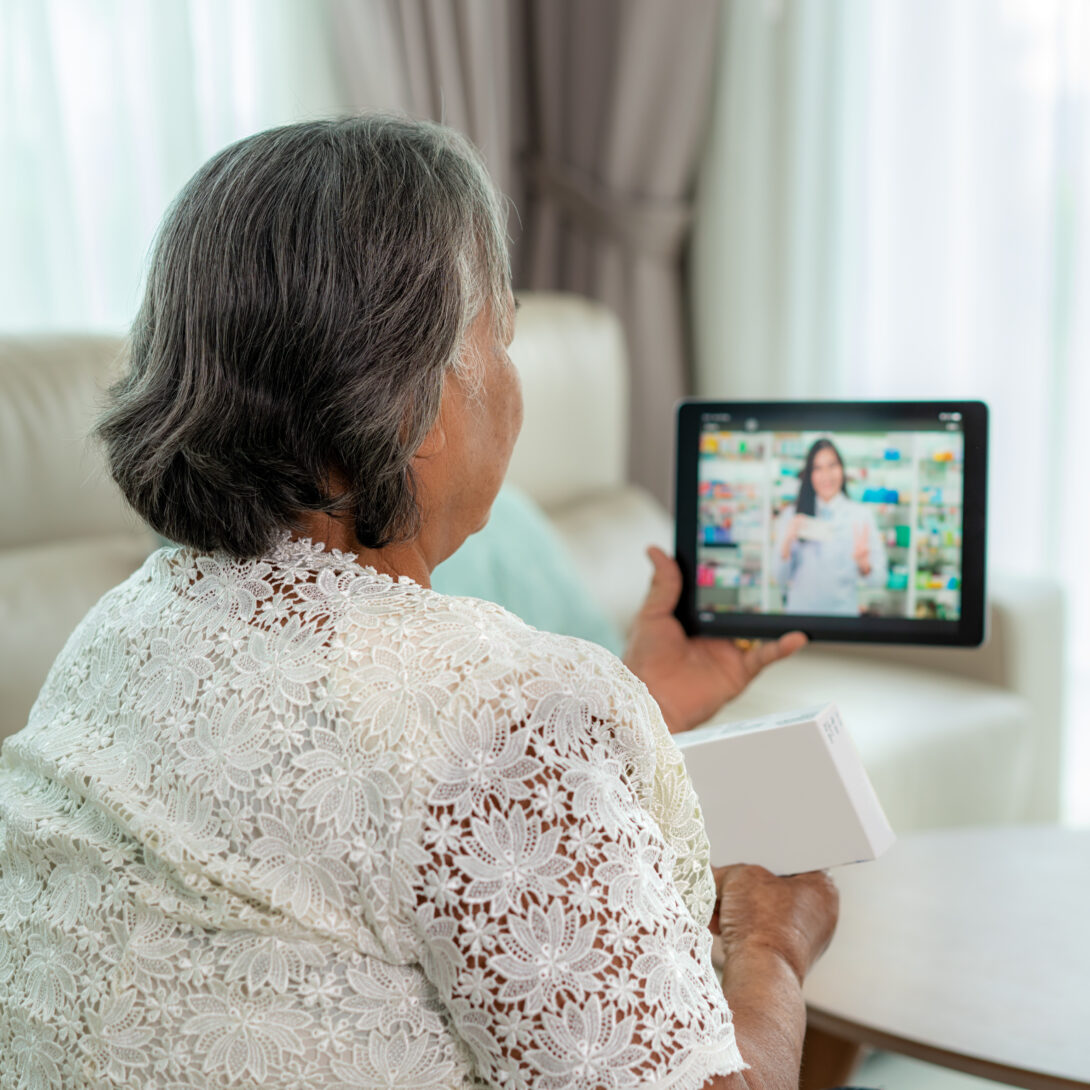Growing healthcare trend of telehealth and remote monitoring
Explore the evolution of healthcare technology through advancements like telehealth and remote monitoring, plus educational opportunities.
The growing healthcare trend of telehealth and remote monitoring

In the blink of an eye, the field of healthcare transformed into something entirely different from just a decade ago. Technological advances have rapidly changed how we deliver patient care.
One of the most prominent trends is the widespread adoption of telehealth and remote monitoring solutions. These new methods use technology to connect patients and healthcare providers for virtual consultations and monitor patients’ health remotely. Telehealth and remote monitoring have changed healthcare delivery by improving patient access, outcomes, and reducing costs. These innovations have revolutionized the way health services are provided.
What is telehealth?
Telehealth, also known as telemedicine, allows patients to consult with their healthcare provider remotely and eliminate the need for in-person visits. Through online platforms accessible via computer, tablet, or smartphone, patients can:
- Engage in conversations with healthcare providers via phone or video calls.
- Securely exchange messages with healthcare providers.
- Utilize technology to monitor and track health data, such as blood pressure readings, facilitating seamless communication with providers.
Benefits of telehealth
One of the most significant advantages of telehealth is its ability to overcome geographical barriers and provide healthcare services to individuals who may have limited access to traditional healthcare facilities. Rural communities benefit from telehealth because it enables them to access specialist care without the need for extensive travel.
Dr. Miriam Isola, University of Illinois Chicago (UIC) Clinical Associate Professor and Program Director for the online Health Informatics Programs, sees how these innovations transform the relationships between consumers, patients, and their providers.
“Telemedicine and remote care include virtual appointments, remote patient monitoring, and telehealth solutions for reaching out to patients who are in remote locations or are unable to visit healthcare facilities in person,” said Dr. Isola. “This will improve efficiency and ultimately the overall quality and accessibility of healthcare services.”
Telehealth offers convenience and flexibility for patients because it allows them to consult with healthcare professionals from the comfort of their own homes. This is especially beneficial for individuals with mobility issues, busy schedules, or chronic conditions that require frequent monitoring. By eliminating the need for in-person visits, telehealth also reduces the burden on the healthcare infrastructure because it frees up resources and appointment slots for patients who require face-to-face care.
What is remote monitoring?
Remote monitoring involves the use of wearable sensors and digital health tools to track patients’ health status and vital signs from a distance. Patients no longer need to be physically present in a healthcare facility to get this type of medical care. Through various technologies and devices, remote monitoring enables:
- Real-time tracking of patients’ health metrics and vital signs.
- Timely detection of any deviations or abnormalities in health parameters.
- Efficient communication between patients and healthcare providers for necessary interventions or adjustments.
Benefits of remote monitoring
Remote monitoring utilizes wearable sensors and digital health technologies to track patients’ health conditions in real-time. This ongoing monitoring empowers healthcare professionals to promptly address any shifts in the patient’s well-being which can prevent complications and minimize hospital readmissions.
This innovation is also a valuable tool for patients managing chronic conditions like diabetes, hypertension, or heart disease. It enables close monitoring of a patient’s health status and treatment adherence, allowing healthcare providers to detect patterns and adjust strategies as needed. This personalized approach enhances patient outcomes and encourages active participation in health management.
Digital Transformation
Telehealth and remote monitoring also play a pivotal role in the ongoing digital transformation of healthcare delivery. These examples show how technology can be harnessed to transform the delivery of care and improve lives.
With a background in public health, Dr. Isola emphasizes the ongoing modernization that organizations will experience in their current operations as technology advances.
“Digital transformation in healthcare is a catalyst for innovation,” said Dr. Isola. “It not only aims to modernize and improve existing healthcare systems but also creates a conducive environment for novel new ideas, technologies, and approaches. These will redefine the ways healthcare is delivered, experienced, and managed.”
An Education in Digital Transformation in Healthcare
UIC’s online Health Informatics programs teach the skills and competencies needed to become digital health developers and leaders. With concentrations in leadership and consumer mobile health (CMH), students are prepared to be a part of the digital health transformation.
UIC Research Assistant Professor Dr. Mohan Zalake says the idea behind the CMH concentration is for students to learn how to develop technology that ends up helping the consumer for the long term.
“It’s beneficial for a health informatics career to know how to design, implement and deploy different technologies,” said Dr. Zalake. “In the CMH concentration, students will learn the development steps and the initial processing, plus everything they need to consider, such as ethics and the prototyping process.”
The healthcare field will require more HI professionals with the knowledge and skillset to help organizations effectively manage new technologies to optimize healthcare delivery and improve patient outcomes. Take the next step in your career and talk to an enrollment specialist to learn more about UIC’s online Health Informatics programs.